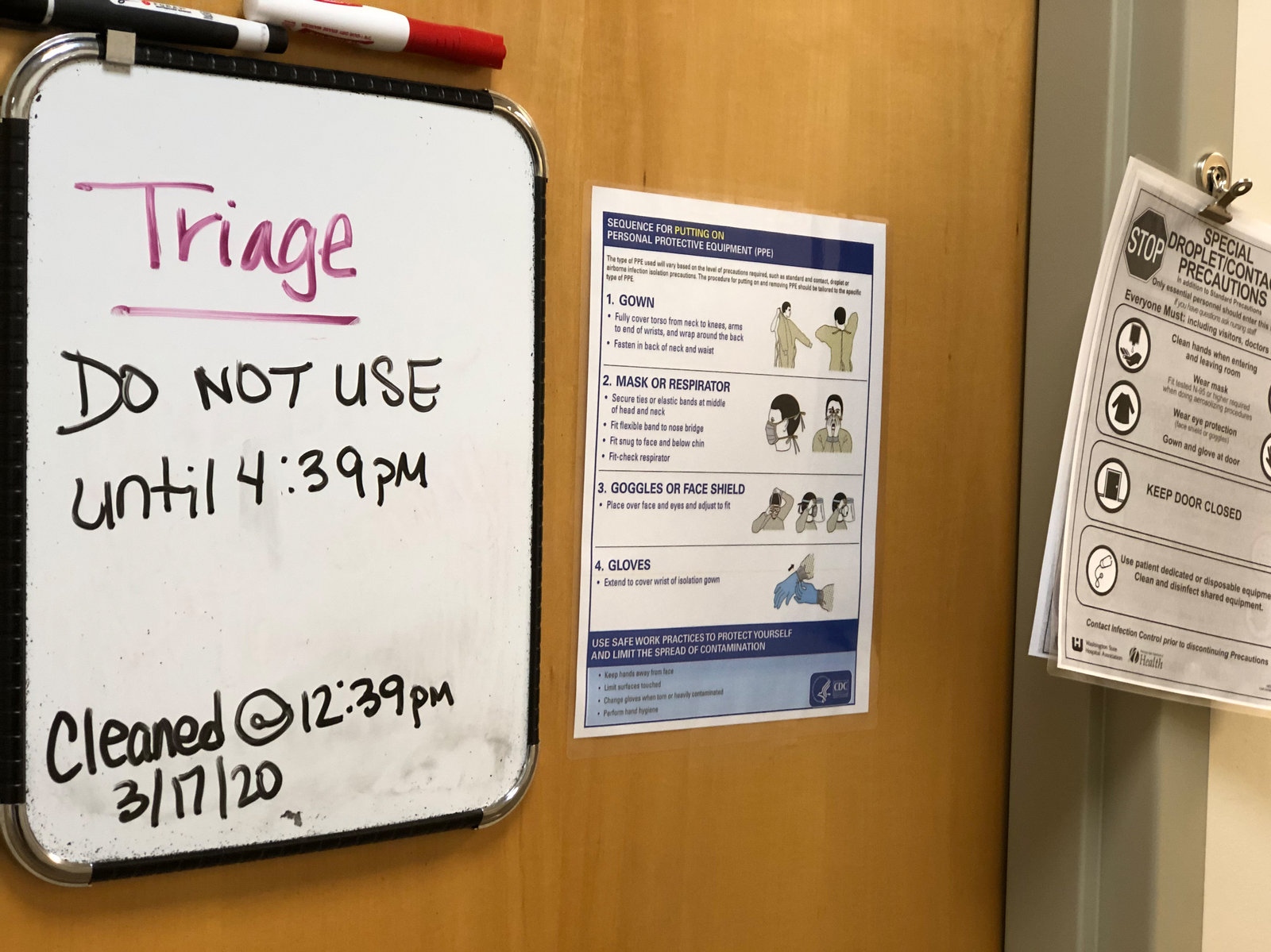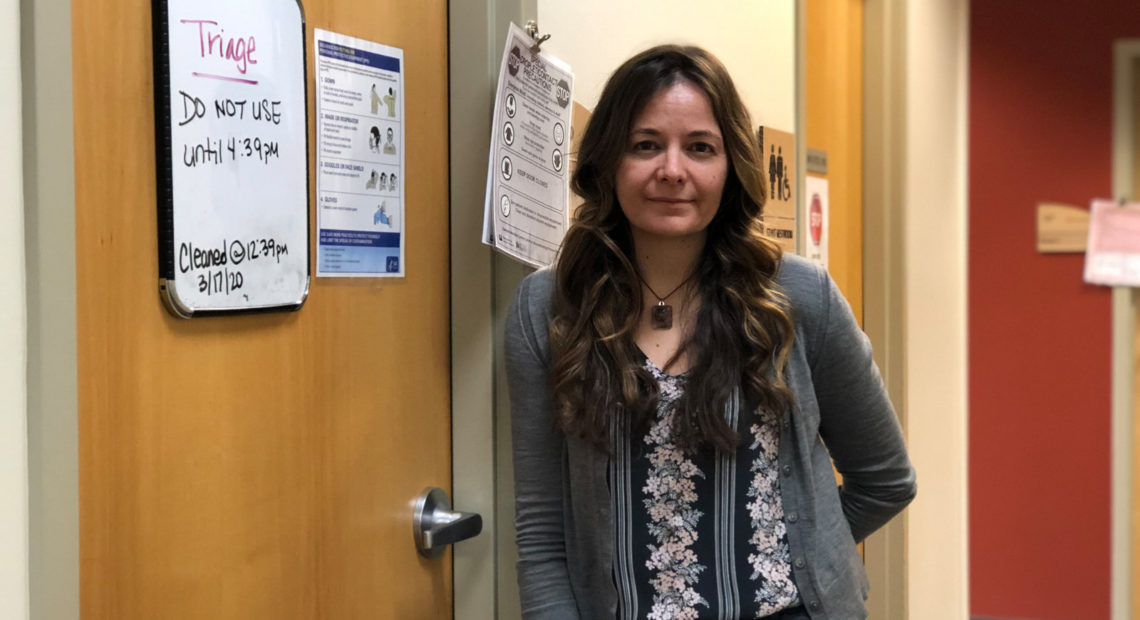
Under Financial Strain, Washington Community Health Centers Ramp Up For Coronavirus Response
READ ON
BY WILL STONE
On Tuesday, the Trump administration announced $100 million in supplemental funding for community health centers to support the response to the coronavirus pandemic.
“Health centers are playing a critical role,” says James Macrae, associate administrator at the federal Bureau for Primary Health Care.
About 29 million people in the U.S rely on community health centers, which provide care to low-income and uninsured patients. And they are under pressure to rapidly pivot to respond to the pandemic.
As hospitals take on more COVID-19 patients, community health centers in many places are reworking how they care for patients. Some safety-net clinics have instituted new infectious disease protocols and temporarily shifted resources away from routine primary care.
SEE ALSO: Cornoavirus News, Updates, Resources From NWPB
The new funding goes to 1,381 community health centers (many of which operate multiple clinics), primarily to support more COVID-19 testing, tele-health and personal protective equipment.
“It’s nowhere near what is needed, but we are thankful,” says Bob Marsalli, CEO of the Washington Association for Community Health, a group representing community health clinics in Washington state.
Marsalli says community health centers in the state are under increasing financial strain as they ramp up for coronavirus, while also losing some key sources of funding.
“[Our clinics] are reallocating their workforce intelligently, but frantically to keep up with the demand,” says Marsalli.
Rapidly redesigning systems
Under normal circumstance, HealthPoint, a community health center in Auburn, Wash., would encourage patients to walk into the clinic for all their medical needs, whether it’s refilling a prescription or learning about nutrition.
“Usually our lobby is slammed,” says Dr. Esther Johnston. “It’s open space and everyone is together.”
But now only a few patients in surgical masks wait for appointments. And Johnston is telling patients to stay away unless they absolutely need care.
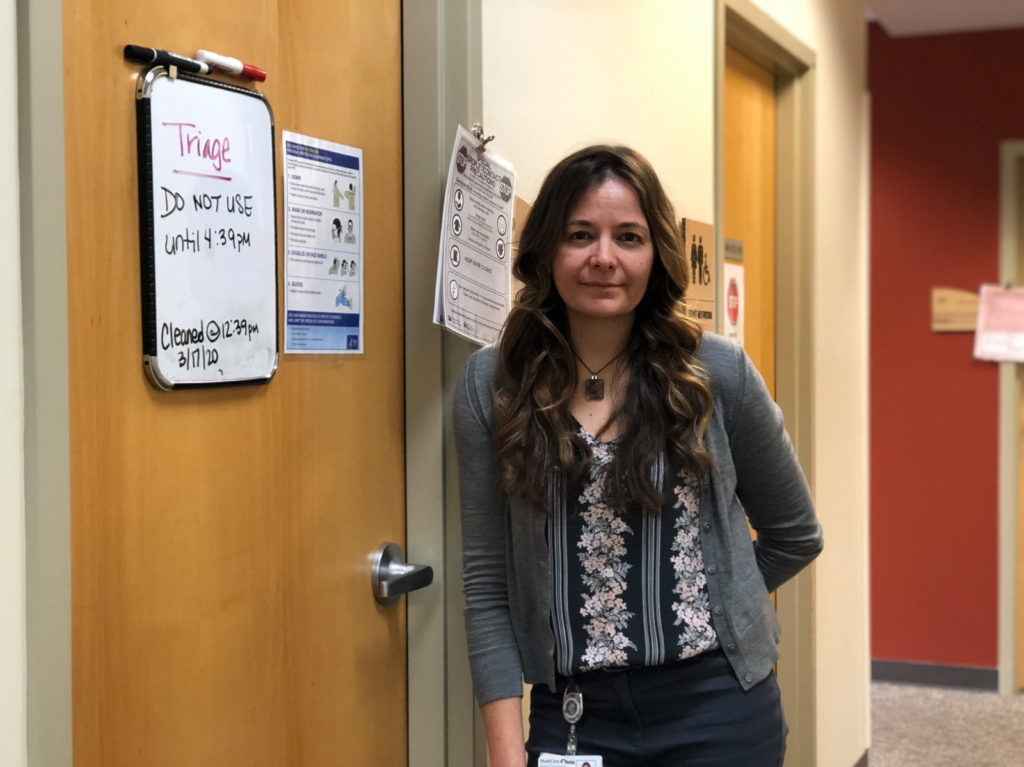
Dr. Esther Johnston of HealthPoint Community Health Center says her clinic in Auburn, Washington has overhauled how it sees patients, shifting resources away from routine primary care to pandemic response by necessity. CREDIT: Will Stone for NPR
“It is a bit frustrating and demoralizing, but it’s the reality of the situation,” she says.
HealthPoint runs more than a dozen clinics throughout Western Washington. Now, at the entryway of its clinics, staff query everyone to identify COVID-19 symptoms and monitor patients to make sure they remain at a distance from each other once inside.
Johnston says their clinic was not set up to house an influx of patients with infectious diseases. There are limited exam rooms and each one needs to be shut down and cleaned after a patient suspected of COVID-19 comes in.
“We just don’t have enough space to be able to do that on a routine basis,” she says.
Johnston worries about what’s coming as cases rise in her area.
“We pride ourselves on being a primary care home,” Johnston says. “We don’t have enough N95 masks, nor to be honest were we prepared for a situation where everyone had to be properly fitted.”
HealthPoint’s chief medical officer Dr. Judy Featherstone says most appointments are now done over the phone.
Her staff is fielding calls from people who are concerned about symptoms, as well as new patients who want to have a doctor in case they contract COVID-19.
“It is a bit like taking twenty years of work and redesigning it in a week,” says Featherstone. “I think we are anticipating potential workforce problems.”
Like many clinics in Washington, HealthPoint has set up outdoor testing sites, but the supply of kits and protective gear, or PPE, has so far limited how many patients they can actually test for COVID-19.
New financial strain on clinics
As fewer patients come in for care, clinic leadership worry about their financial future. Clinics have switched to telephone-based appointments, but it took several weeks for Washington’s Medicaid program to adjust how it pays for those visits.
Meanwhile, community health centers are eliminating routine dental visits, which is a key funding stream.
“You take those three factors … and you have already started to lose revenue before you’re gearing up for new ways of providing care,” says Michael Erikson, who is CEO of Neighborcare Health, which serves more than 70,000 Washington residents, over half of them on Medicaid. “We are on a pathway to losing $3 million a month.”
The Washington Association for Community Health projects that the cutback in dental care could lead to a $250 million shortfall for the state’s community health center system over the next nine months.
Playing a vital role in the health system
Community clinics play an important role in serving patients who otherwise might have no place to go besides the ER.
Erikson says his organization is trying to relieve some of the pressures on the hospital system by seeing patients with other urgent health care issues.
“For instance, a wound care patient who has underlying diabetes, you do not want to expose that patient to a potential COVID environment,” says Erikson.
Some community clinic leaders now worry about losing staff to suspected or actual coronavirus infection.
“It is very critical that the clinics stay at full staff so only those who are critically sick are cared for at the hospital,” says Sheila Berschauer, CEO of Moses Lake Community Health Center, a rural health care provider in Washington that serves about a third of its county’s population of about 100,000.
SEE ALSO: Cornoavirus News, Updates, Resources From NWPB
If even five to ten health care workers fall ill, Berschauer says that could strain her organization and, as a result, possibly overwhelm the local hospital.
She says some patients still don’t appreciate the severity of the pandemic and become upset when they are sent to the outdoor testing site rather than into the clinic.
A health care worker at a community health center outside Seattle says several patients have misrepresented their COVID-19 risks in order to get past screening.
“We had a patient make it all the way into the exam room before she revealed that her partner is COVID exposed, and she is feeling ill,” the employee told NPR. NPR is not using the person’s name as they are worried about losing their job for speaking about this.
Health care workers who saw the patient were not wearing PPE because those limited supplies are being reserved for patients who are known to be at risk of COVID-19.
“Now all of the providers and staff in that facility need to start self monitoring for signs of infection,” the employee says. “If they get infected, then the entire clinic closes. It’s a big deal.”
Copyright 2020 NPR. To see more, visit npr.org
Related Stories:
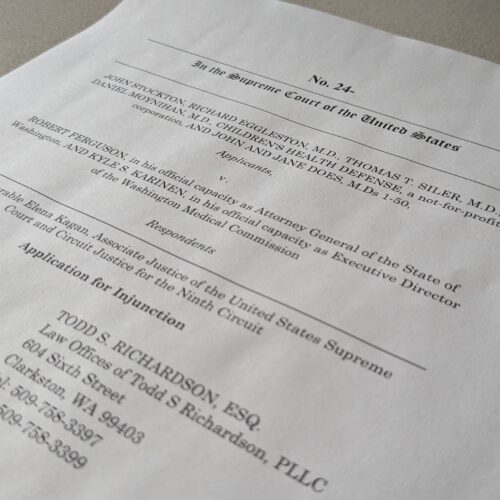
Group representing retired Clarkston ophthalmologist asks US Supreme Court for injunctive relief
A retired Clarkston eye doctor is part of a group asking the U-S Supreme Court to grant an injunction in a lawsuit against Washington state officials.
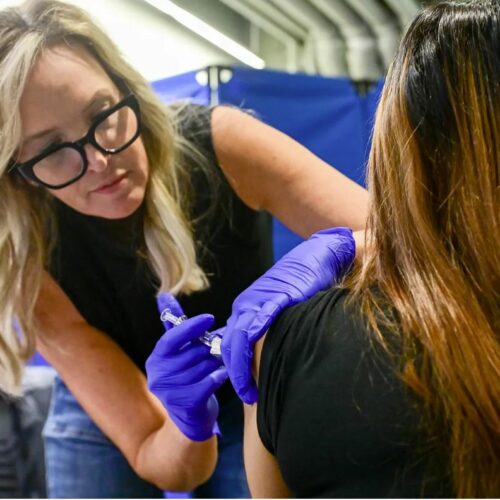
Experts say get vaccinated now for influenza
Flu season is just around the corner, and health officials say now is a great time to get your flu shot.
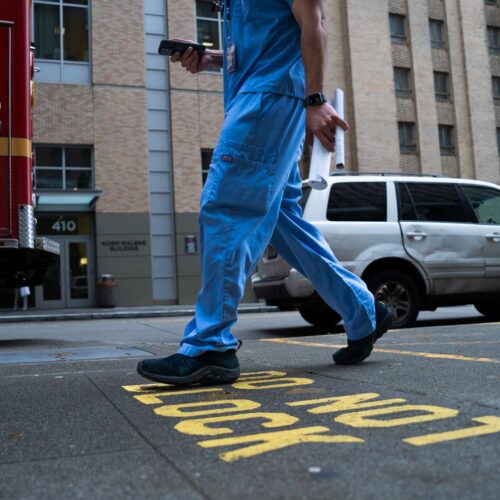
Long-COVID patients need more resources in central Washington
In Washington, there is only one clinic to treat Long-COVID. It is in Seattle on the west side of the state. Long-COVID haulers in the Yakima Valley face a lack of local resources, diagnosis and information. Some say they feel disconnected from their doctors. This is part three of a collaborative piece with palabra about Long-COVID.

